Neurological disorders
The numerous neurological disorders can express themselves in a wide variety of ways. There are many possible symptoms and their severity can differ even with the same clinical picture, so that every affected individual can develop different primary problems.
Since there are many different neurological disorders that often have the same symptoms, we have summarised all related information on this page in the context of kybun. Every affected individual can take the information relevant to them.
Definition
All nervous system disorders.
The organ systems considered in neurology are the central nervous system, that is the brain and spinal cord, its surrounding structures and blood vessels, and the peripheral nervous system including its connecting structures to the muscles and muscular system.
Causes
Possible causes include: Heredity, chronic infections or defective regulation of the immune system.
Long-term consequences
The kybun principle of operation – being proactive
It is not possible to make general statements since the severity of symptoms for individuals affected by neurological disorders often differs significantly.
The kybun shoe has an unstable sole, which promotes the coordination and strength of the feet and the entire body. The wearer can also feel the ground through the sole, boosting confidence while walking and stimulating foot sensitivity.
Symptoms such as dizziness, gait disturbances, and coordination and balance disturbances can therefore be addressed effectively with the kybun shoe. Affected individuals can perform daily, adapted training with the kybun shoe independently.
If body parts are paralysed, the affected individual or attending therapist has to assess whether the kybun shoe alleviates the weaknesses and boosts confidence while walking or whether the affected individual is currently overchallenged by the instability in the kybun shoe. As long as the affected individual feels comfortable and safe in the kybun shoe, we recommend it. If there is an increased risk of falling, we would advise against the kybun shoe at this time and train the stabilising foot musculature while standing on the kybun mat.
Initial reactions
Specific initial reactions with neurological disorders:
In case of significant balance and coordination disturbances, the kybun shoe may be too unstable in the beginning and the risk of falling too great.
The kybun mat is particularly well suited in this situation, since the affected individual can perform the exercises in place and hold on to a fixed object if required.
Click here for the general initial reactions experienced by kybun mat and kybun shoe beginners: Initial reactions
kybun exercises
Application tips
Give yourself sufficient time while testing the kybun shoe or kybun mat, so your body can get used to the new feeling while walking and standing.
Listen to your body, how do you feel? Is the kybun shoe/kybun mat good for you?
Take a short break if you feel fatigued or experience pain.
If you feel very uncertain in the kybun shoe, we recommend the kybun mat. It allows you to focus on the correct body posture in place and hold on to a fixed object if necessary.
Try to integrate the kybun shoe/kybun mat into your daily routine. The more often you train with it, the faster you will notice your body making progress. It is better to use it for shorter periods but more often each day.
Opinions/customer testimonials
My own background is in research so I am always willing to try out new things. I have seen how helpful the shoes can be. I was particularly impressed when my wife told me that she couldn’t imagine going without these shoes. She says she now needs to go and change all of her other shoes. She is absolutely delighted. The shoes will particularly help pregnant women who were already suffering from pain. But they can also help people who have pain in the musculoskeletal system or neurological problems and I think pregnant women can definitely benefit from wearing them. Women can benefit from wearing kyBoot shoes, whether it is during the pregnancy itself or afterwards in the nursing period where joints are still more elastic and need more care.
I feel it throughout my entire body. I have been able to significantly reduce the spasticity in my shoulder and in my arm. It’s still a little bit stiff, of course. The spasticity caused my arm to be stuck in a rigid position on my chest. That caused a lot of pain and tension in my body, but I don’t have that anymore. I no longer have to put up with it. I feel a lot more relaxed now; my back doesn’t tense up, and I can even raise my arm. The reason all this has happened is because my muscles are relaxed, and I believe that this is down to wearing the kybun shoe. This shoe has made all this possible.
It took me at least ten years to regain some sense of normality in my life. I have been back on my feet for the last five years, and now I’d like to be able to walk without feeling any pain. That’s why I ended up trying out the kybun shoe. I will wear this shoe for the rest of my life. Wearing this shoe is a true pleasure.
My mother and my brother, for example, have told me that I have been much more agile when I’m out and about. Maybe I haven’t noticed it myself, but other people have been telling me that I seem a lot more agile when I’m on the go. I’m much fitter throughout the day, because it doesn’t hurt me to wear it and it doesn’t rob me of my energy.
I feel it does my body good to be constantly moving. There’s no more stiffness, and I’ve the feeling that it is gradually going. I think it’s great that I can stand during the day with these shoes.
I definitely have more zest for life with these shoes. I feel better in the world.
My steps are softened. My knees hurt less; there are no shocks and impact. I definitely won’t be giving the shoes away.
It was an experiment and we had no scientific proof that it would work. We were surprised to discover that it could improve neurological movement disorders, including MS and Parkinson’s disease. Of course, we also have patients with paralysis caused by a stroke, for example. We let them walk on the soft, springy kybun mat. We saw a clinical improvement in the situation. For example, this means that all of a sudden, patients with Parkinson’s disease require less medication or even none at all. They also no longer experience tremors. We’ve also noticed an improvement in MS patients, but we have definitely seen the greatest improvement in patients with Parkinson’s disease. However, mobility has also improved for patients with paralysis. It is actually a mystery to us how these improvements came about. We just don’t know. We can only assume that the stimulation caused by spatial awareness and in the lower extremities stimulates brain tissue. Certain interactions that were disconnected are suddenly open again. This is typical in Parkinson’s disease. We are continuing our research in this area in order to be able to confirm this with other patients with Parkinson’s disease. We were very surprised that it has an effect and of course, we’re delighted that it’s possible to help these patients.
After a serious accident that resulted in polyneuropathy in my feet, I am dependent on good footwear. I began wearing the kybun shoe while undergoing physiotherapy. Today I mainly wear the kybun shoe when I work with my horses and out walking on country roads.
I broke three vertebrae in my back in an accident eight years ago. I have suffered from neurological complaints ever since. In normal shoes I have pain in my upper thoracic spine and feel tense in my neck. I also have a minor hallux condition. Thanks to the kybun shoe, I can walk without any pain. It is simply phenomenal. Walking is very enjoyable and I hardly notice the hallux anymore.
As an epilepsy sufferer, I was always very mindful when going for walks, shopping or on the way to work. This was because when I was out walking, and often without notice, I had to deal with restricted movement and very severe coordination problems. Although at first I could scarcely believe it: From the moment I first put on my kybun Sorak Black shoe, I was a different person. My perceptions when walking are completely different than before. It's also great to have a colleague at work with similar symptoms, who I can now help with their walking.

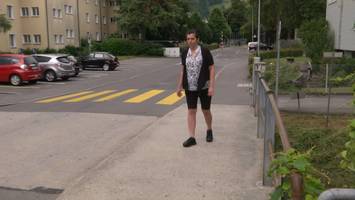
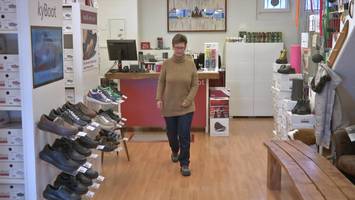
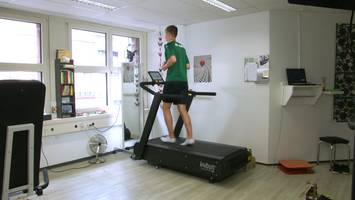
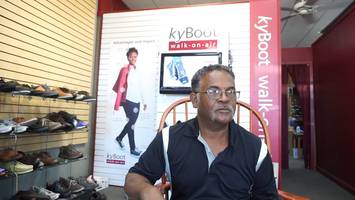
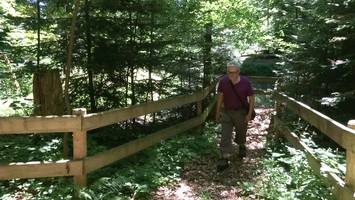
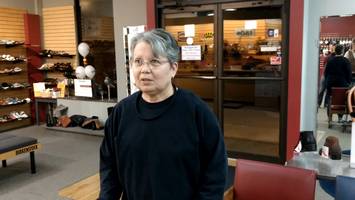
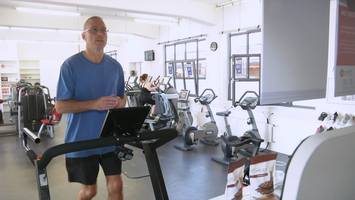









![[Translate to English:] Erika Wissmann](/fileadmin/_processed_/5/d/csm_Erika-Wissmann_9d413fc98f.jpg)
![[Translate to English:] Jens Müller](/fileadmin/_processed_/c/3/csm_JensMueller_01_3c94f6e71b.jpg)




